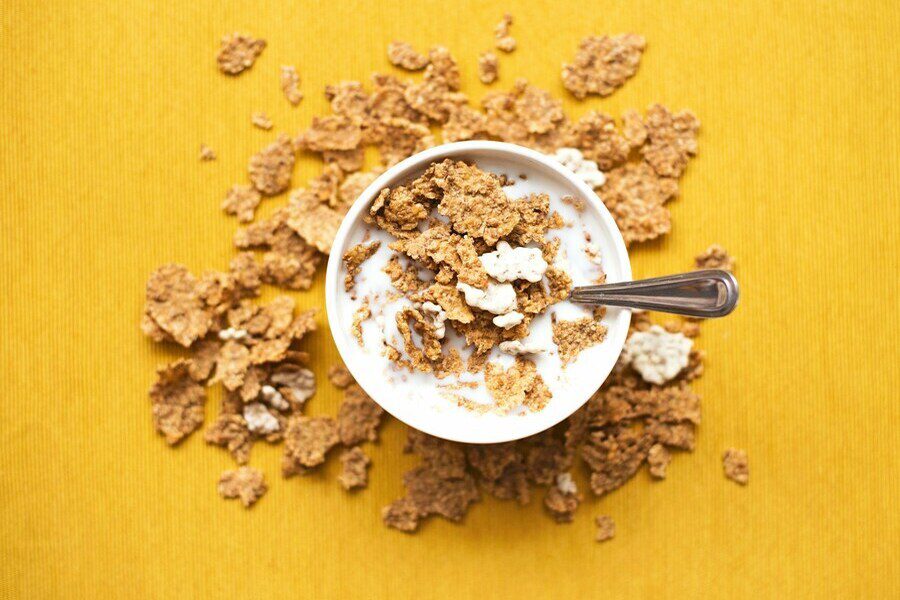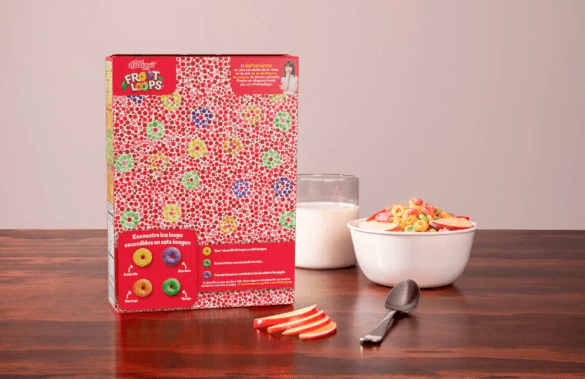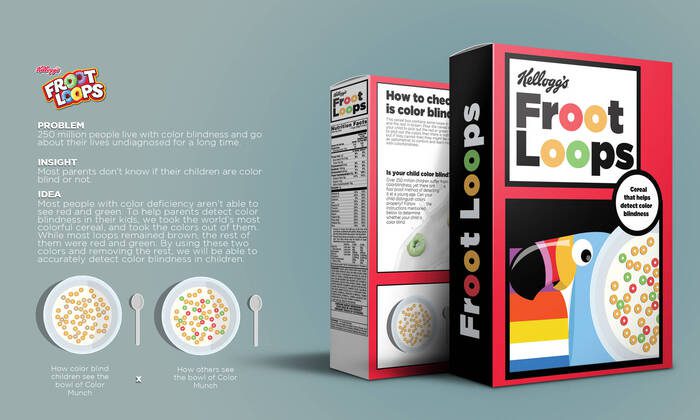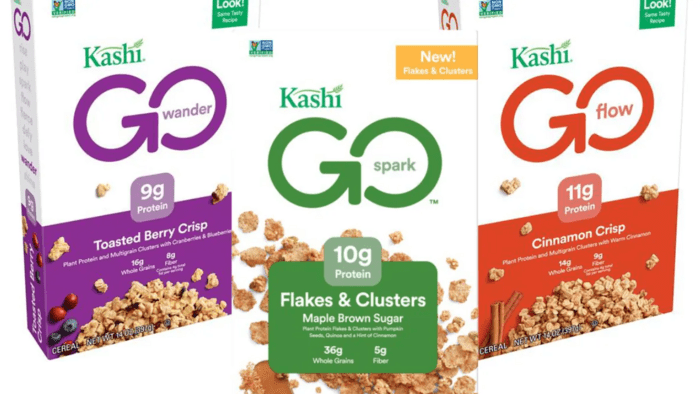Beyond the Bowl: 8 Marketing Lessons From Cereal Brands
Forget the milk-first-or-cereal debate! To several people, cereal isn’t just breakfast. A bowl of cereal can often be a portal to childhood memories. Memories of competing with a sibling to see who could finish their bowl of cereal the fastest. Or a bowl of cereal topped with marshmallows instantly brightening the day. This emotional connection is what makes marketing for cereal brands so fascinating.

So, how do cereal brands capture that magic in their advertising? Let’s dive into the clever strategies cereal companies around the world use to keep consumers reaching for that next bowl. Ready to explore the brilliant marketing lessons hidden in your morning cereal? Let’s dig in!
8 Marketing Lessons From Cereal Brands & Their Campaigns
The cereal industry is a multi-billion-dollar industry with it raking in a whopping US$82.16 billion in 2024 and projected to grow at an annual CAGR of 5.69%. Amidst this fierce competition, how do some brands stay on top and continue to win hearts? Let’s delve into the clever marketing strategies adopted by them.
1. Tap into the power of nostalgia
Remember we spoke about cereals being a reminder of childhood memories for many? Therefore, nostalgia can be a powerful tool in cereal marketing.
Seamlessly incorporate nostalgia into your campaign, whether it is a single commercial or a multi-channel campaign. Let’s take Cheerios’s strategy as an example.
Here’s a Cheerios commercial from 1999. It’s a simple real-life scene of a grandma bonding with her grandchild over a bowl of breakfast cereal.
In 2020 a TikTok trend got this commercial trending again. So, what did Cheerios do about it? They capitalized on the trend and remade their old commercial featuring the original actors.
This remake sparked a wave of positive sentiment and reminded viewers of the joy associated with the brand. Besides, it kindled nostalgia in the several adults by reminding them of a commercial from their childhood.
Here are a few ideas to take away from this:
- Similar to the Cheerios example, if there are any classic commercials from your brand from decades ago, bring them back but with a strong reason behind why you are doing that.
- Or reimagine classic characters – they could be long-forgotten comic book characters or pop culture references that resonate with parents who are buying cereals for their kids. By incorporating these nostalgic references, you’re also giving them a special story to share with their children.
- Identify a theme and encourage users to share their stories, photos, or even video clips talking about their own cereal-related memories from their childhood.
2. Identify relevant sensory cues
Catchy content for brands can come in the form of signature characters or a tagline or a jingle in the commercials. These catchy elements can be valuable tools for cereal brands to build memorability.
To make better sense of this, try recalling an old commercial from your childhood. Did you catch yourself humming the jingle in it? That’s one of the sensory cues that stuck to your mind. This is a common trend that many cereal brands around the world adopt in their marketing.
For instance, here’s an old Kellogg’s Rice Krispies commercial. The “Snap, Crackle, Pop!” jingle was simple, catchy, and instantly recognizable.
Quick fact: Did you know that the jingle in this one was composed by The Rolling Stones?
The brand has stayed consistent with their style and have regularly incorporated jingles in some of their recent ads too. However, yes, they have modernized these jingles and the visuals to resonate with the new audiences and their preferences in music.
Similarly, create sensory cues that stick with your audience for a long time. Years from now, if they were to recall your brand or your commercial, these sensory cues might perhaps be that much-needed nudge.
3. Tailor the message for your audience
Making meaningful ads is important. But what’s even more important is to make them meaningful to your target audience. Because what inspires one demographic might fall flat with another.
In the case of cereals, the major focus is on children. Hence, Weet-Bix, one of the leading cereal brands in Australia, came up with the Feed the Belief campaign. This campaign is all about feeding the belief in young children, inspiring them to dream big and chase their dreams too.
By connecting with the aspirations and needs of Australian families, Weet-Bix has established itself as a trusted breakfast staple.
The best part about meaningful commercials like this one is that they don’t just connect with kids but also win the hearts of parents. They know that the brand they are choosing for their kids goes beyond promotional gimmicks and actually makes an effort to make a difference.
A few quick things to remember when crafting meaningful campaigns like this one:
- Aim for inclusive representations in your commercials.
- Understand cultural nuances and dietary restrictions so that your ad makes sense to diverse audiences.
4. Focus on purpose-driven ideas
Consumers today feel drawn to brands that stand for a strong cause. Because purpose-driven strategies help humanize the brand and strong customer relationships are built on such shared values.
There have been several instances of cereal brands adopting this approach and tapping into the power of purpose. A good example here is the color blindness test that Froot Loops included in their packaging in Guatemala and India.
The idea in both these campaigns was simple – to help raise awareness about color blindness and to help parents identify color blindness in their children.
This purpose-driven campaign worked because it did not appear too unscripted or contrast the brand’s values in any way. Besides the message was pretty clear and useful too.
At this point, please note that there is an increasing awareness about cereals not being the healthiest of breakfast options available. Therefore, ads that make false claims about the health factors of cereals are a big NO! Instead, focus on other purpose-driven ideas resonant with your target demographics like the one adopted by Froot Loops.
5. Venture outside your comfort zone
While hopping on new trends is a good idea, creating new trends is even better. Cereal brands like Kellogg’s have proved this time and again.
Their recent “cereal for dinner” campaign is a great example. Being aware of the changes in the market, the brand began bending the rules in cereal marketing when the food prices started increasing. In the below video, Gary Pilnick, CEO of Kellogg’s explains the evolving trend of consuming cereal for dinner and why it makes sense.
Accordingly, they also came up with a few commercials promoting their cereals as not just a breakfast option but also something for dinner.
In competitive industries like the breakfast cereal market, staying innovative and exploring new ways to place your product can be pretty useful. However, you need strong research-backed data and an understanding of your market to make the big move. In this case, Kellogg’s campaign was in response to the changing food prices and not merely an effort to bend the rules.
Similarly, stay alert and create new opportunities within your industry to emerge as a pioneer and amass a bigger audience following for your brand.
6. Capitalize on the effectiveness of mascots in marketing
If there is one thing common among several cereal brands around the world, it’s the effective use of mascots in marketing. Mascots work particularly well among family audiences and hence have always been valuable in cereal marketing.
Toucan Sam for Froot Loops, Tony the Tiger for Frosted Flakes, and Sonny the Cuckoo for Cocoa Puffs are all great examples to recall at this point.
The rabbit mascot of the popular cereal brand Trix was also a big part of their marketing a few decades ago. In fact, it was an important part of promoting their cereal as something exclusively for kids clearly defining their target audience.
Here’s the Trix commercial where the Rabbit mascot debuted.
Recently, Trix chose to bring back their mascot and it has been appearing on their packaging as well as in some of their commercials.
Most importantly, for your mascot to work, you need consistent representation of the mascot’s personality. Will your mascot be inspirational or will it be fun or friendly? Additionally, amplify its personality with a catchphrase and consistently use this in your campaigns built around your mascot.
Toucan Sam’s “Follow Your Nose” catchphrase is a great example.
Here’s a recent Froot Loops commercial featuring the Toucan Sam mascot and its signature catchphrase.
This shows how a cohesive presentation of the mascot can help create brand recognizability over generations.
7. Focus on capturing attention
Always sticking to the rules and doing what’s already done will not help you attract attention especially with other brands competing for attention as well. You need to do something extraordinary to stand out.
One of the most popular cereal brands to prove this point in recent times is Surreal. Their fake celebrity campaigns gained a lot of attention, media coverage, and social media buzz. People spoke about the brand’s brilliant use of celebrity names to draw attention without actually spending on celebrity endorsements.
Of course, their ads included a clear disclaimer to avoid misleading customers and communicate what’s actually presented.
Dwayne Johnson, Serena Williams, Ronaldo and Michael Jordan have all stepped up to say they love the cereal brand Surreal. But they might not be the Dwayne Johnson, Serena Williams, Ronaldo and Michael Jordan you're thinking of. https://t.co/pLoRBMgpta
— Ad Age (@adage) March 9, 2023
The visual brilliance of these ads is yet another point we would like to direct you to. There is a clear use of visual hierarchy so that the text with the celebrity names immediately gets noticed. And the only other text in the ad is the disclaimer that explains who the person referred to in the ad actually is thus preserving the transparency of the ad.
Finally, to keep the focus entirely on the clever messaging, the ad uses a clutter-free design with minimal text and visual elements. This ad reiterates the need for clear visual execution for an innovative idea to actually make an impact.
8. Evolving with the changing demands
Another thing we can learn from cereal brands is that staying ahead requires staying up-to-date with evolving customer expectations. There have been drastic shifts in the food industry with more and more people switching to healthier alternatives. Therefore many cereal brands have accommodated these changes by transforming their processes, their ingredients or their approach.
When such major transitions happen within an organization, a rebranding often ensues and this rebranding often plays a vital role in the success of these cereal brands. It is pivotal in keeping the cereal brand ahead in a crowded marketplace. In fact, this applies to most other industries and hence you see several big brands undergoing a logo redesign or a whole brand refresh once in a while.
For example, let’s look at the rebranding of the popular cereal brand Kashi Go. Originally, the brand was called Kashi GoLean. To keep up with the evolving consumer demands and shift in focus from weight loss toward healthy living, the brand underwent a rebranding and became Kashi Go. Everything from the branding to the packaging evolved with this transformation.
With this rebranding, Kashi Go also did an overhaul on their marketing approach to resonate with the younger demographics. This change helped capture their new focus on holistic wellness from the previous priority on weight loss.
Rebranding campaigns often involve a logo redesign and plenty of other promotional graphics for various marketing channels. These promotional graphics are meant to announce the changes coming to your brand and the reason behind these changes. This helps your brand transition smoothly without losing your existing audience base.
Working on your rebranding campaign? Get KIMP to tackle all the design requirements that come with it.
Bring Your Cereal Brands Inspired Marketing Ideas to Life With KIMP Designs
As can be seen from all these examples, the world of cereal marketing is filled with creative inspiration. Feeling inspired already? Then now is a good time to start incorporating some of these ideas into your marketing strategies. And yes, visuals have a big role to play whenever you work on fresh ideas for your marketing approach.
This is where a dedicated design team like KIMP comes into the picture. One unlimited subscription is all it takes to give your marketing designs and your marketing strategies a complete makeover.
Not ready to make the big leap just yet? How about starting with a free trial? Register now to get started!



